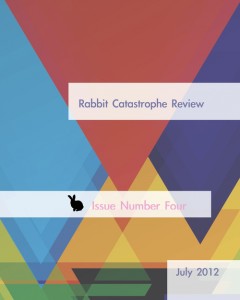By John McDonough, Colorado Review Associate Editor
The queue. The slush pile. The drawer. I’m sure there are other names out there (many unpublishable), all of which speak to dreaded way journal editors and editorial assistants think about the submissions that both give them life and (seem to) threaten to take it away. So many quality articles have already been written about the slush pile, and most of them are true. Yes, there are bad stories in the queue, and, yes, it is exhausting (and discouraging) to pore over (and reject) so many of them. Yes, it feels cruel to dispatch a story someone has thrown their heart into after five pages (or three pages, or one page, or five sentences…). Yes, you should do every single thing Lynne Barrett tells you to in that Review Review essay, but no, it might not matter because, yes, to an extent, it’s all kind of a crapshoot.
When I put on my writerly pants (you know, the soft grey ones with the drawstring), that crapshoot can get me down. Is that essay having trouble getting placed because it’s not “there” yet or because it’s just wasn’t that editor’s cup of tea? How many times am I going to have to send this story out before someone sees it the way I do? It’s not the rejection I fear so much as the feeling of limbo that comes after. I imagine that many face a similar predicament.
If I’m being truthful, the slippery nature of the queue doubles as the source of my greatest anxiety as an editor. My concerns are probably the same as any editor faces. Am I missing something? Am I a miser, a cynic, a picky, demanding jerk? Do I even have an eye for talent? What would I have done had “You’re Ugly, Too” or “Car Crash While Hitchhiking” popped up in my Submittable queue? I would have bled for them, I believe, but at the same time I know that Barrett is right when she suggests that “the glow of approval” is a powerful drug.
And worse yet, there’s another anxiety. What if my taste in fiction is bad?
I’ve been reading for Colorado Review for a year and a half, and by now, when I pick up a story, I have a fairly good idea whether or not it will make it into the magazine. Fiction Editor Steven Schwartz has cultivated a clear aesthetic (here it is, if you’re looking for Barrett’s “shortcut”: “resonance and intimacy, a revealed privacy that is neither gratuitous nor exploited but honestly arrived at through insistent craft”), which, while it doesn’t prevent me from passing along all the strong, worthy fiction we receive that departs from that model, it does help me recognize when a writer is better off rolling the dice somewhere else. Rejecting quality work by good writers is simply what journals are cursed to do.
 Regardless, these self-doubts have recently grown larger. This past year I accepted an invitation to serve in an editorial position at an upstart journal formed by friends a few years back. Here, I’m no longer an associate editor; instead, I’m the editor, responsible for cultivating an aesthetic of my own, for finding good fiction the bigger journals missed or didn’t have room for or weren’t a good fit for. This is a situation all young journals face, one Colorado Review faced long ago. Who are we, and what do we stand for?
Regardless, these self-doubts have recently grown larger. This past year I accepted an invitation to serve in an editorial position at an upstart journal formed by friends a few years back. Here, I’m no longer an associate editor; instead, I’m the editor, responsible for cultivating an aesthetic of my own, for finding good fiction the bigger journals missed or didn’t have room for or weren’t a good fit for. This is a situation all young journals face, one Colorado Review faced long ago. Who are we, and what do we stand for?
It is appropriate, then, that in my first foray into my other queue, the one whose walls I’m still working to shape, I would be faced with a story that seemed strangely, remarkably familiar.
You know where this is heading, so let me get to the point. That familiar story? Yes, I had previously read it. Yes, in the other queue. And yes, I rejected it that first time. It was intriguing, but one of those stories alluded to above, the ones we make the tough decision that they’re better served rolling the dice elsewhere. But as I read it again in this new queue, the story changed. But the story didn’t change. The context changed. I simply wasn’t reading it with the same aesthetic in mind, looking for it to fulfill certain expectations or shapes or moves. We accepted that story, and I’m glad of it.
This is how journals work. That story didn’t fit in the magazine it was first intended for. Or if you prefer, the journal didn’t fit the story it was sent. This shouldn’t reflect negatively on anyone involved. This is why there are so many great journals in the world. This is why so many journals are necessary.
This story is an equation. It features one piece of quality fiction and two quality journals, but there was only one way it could be solved.
I spoke too loosely above when I suggested that submitting work is a crapshoot. A crapshoot implies a binary—winning or losing—one option good, one option bad. I wonder if this mindset is partially to blame for the fear and negativity so many face when sending out work. Sometimes I think it would be more useful to think of submission in a new way, something more akin to a journey. A story goes out in search of a home, and sometimes it will find one quickly, and at other times it won’t. Look at rejected work with a critical eye, please, of course. But perhaps we should also keep in mind that rejection might simply be an encouragement that someplace else is out there where our work really belongs.
